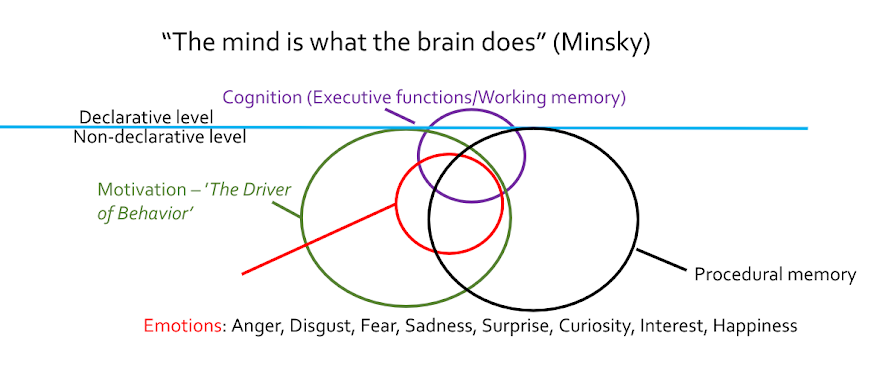Please support the blog via Swish (Sweden) or MobilePay (Finland).
A concept that repeatedly appeared on interactive media platforms in the last year is psychological safety. According to the Harvard Business Review, the term is defined as follows:
“Team psychological safety is a shared belief that members of a team have that it is OK to take risks, to express their ideas and concerns, to speak up with questions, and to admit mistakes—all without fear of negative consequences”.Harvard Business Reviews referens är Amy Edmondson som menar att psykologiskt säkerhet är ett socialt fenomen.
“it is an emerging property of the group. In fact, in most studies, people who work closely together have similar levels of psychological safety compared to people in other teams” (Edmondson).They believe that Edmondson has shown that psychological safety affects team creativity and innovation, learning and performance. The link goes to a study she did in 1999 that focused on learning in teams (a variation on learning organizations). Edmondson's conclusion there is:
“As predicted, learning behavior mediates between team psychological safety and team performance. The results support an integrative perspective where both team structures, such as context support and team leader coaching, and shared beliefs shape team outcomes.'”Link to source.
In the article Edmondson means, with reference to Hackman (1987), that:
“team effectiveness is enabled by structural features such as a well-designed team task, appropriate team composition, and a context that ensures the availability of information, resources, and rewards”.
“... the project concluded that who was on a team mattered less than how the team worked together. And the most important factor was psychological safety.”Finally comes the question: How do you create psychological safety?
“Edmondson is quick to point out that "it's more magic than science" and it's important for managers to remember that this is "a climate that we create together, sometimes in mysterious ways.”Link to source.
The concept of “psychological safety” was coined in the 1950s by the psychologist Carl Rogers (1902 – 1987), with the aim of creating the conditions for the individual's creativity. Rogers points out three aspects as important (crucial) for psychological safety:
- unconditional value;
- provide a climate where external evaluation is absent;
- understand empathically.
- People cannot be reduced to components, but must be seen as part of a whole.
- Humans exist in a uniquely human context.
- Humans are meta-conscious, ie. are aware that they are aware.
- Humans has the ability to make choices and therefore has responsibilit.
- People are intentionally prospective - aiming at goals - and are aware of what they cause.
In an organization, psychological safety can be thought of as being associated - correlated - with the sense of organizational well-being - the degree to which positive affect outweighs negative affect with respect to one's overall work experiences (James och James, 1989). Their starting point was Locke (1976):
A nonexhaustive but important set of latent values appears to include desires for: (a) clarity, harmony, and justice; (b) challenge, independence, and responsibility; (c) work facilitation, support, and recognition; and (d) warm and friendly social relations (Locke, 1976, p. 1329).James and James believe that these aspects are crucial for experiencing well-being in the workplace - influencing the work climate. They propose four dimensions (s. 742):
- Role stress and lack of harmony
- Job challenge and autonomy
- Leadership facilitation and support
- Workgroup cooperation, friendliness, and warmth
- Challenge
- Freedom
- Idea Support
- Trust/Openness
- Dynamism
- Playfulness
- Debates
- Conflicts
- Risk-taking
- Idea Time.
- there needs to be a high ceiling for new ideas and for admitting mistakes.
- Independence is another important factor.
- A third factor points to the importance of leadership.
- A fourth aspect is challeng.
My interpretation is that Locke (1976), Ekvall (1996) and James and James (1989) believe that the leader should challenge the group/organization, while Edmondson's approach seems to be about daring to challenge within the group.
Suggested reading (in Swedish): Forskare ska testa KBT mot klimatrelaterad psykisk ohälsa. En kommentar.
Please support the blog via Swish (Sweden) or MobilePay (Finland).
More about my expertise:
Executive coaching for CEOs/managers and workshops to facilitate Organizational Performance, Learning, and Creativity for Problem Solving | Lectures: Nutrition for physical and mental health | Course/lecture: children's emotional and social adjustment and cognitive development | Language training - Swedish | Academy Competency | CV | Teaching skills and experience | Summary of research project | Instagram | Linkedin | YouTube-channel | TikTok | Twitter

No comments:
Post a Comment